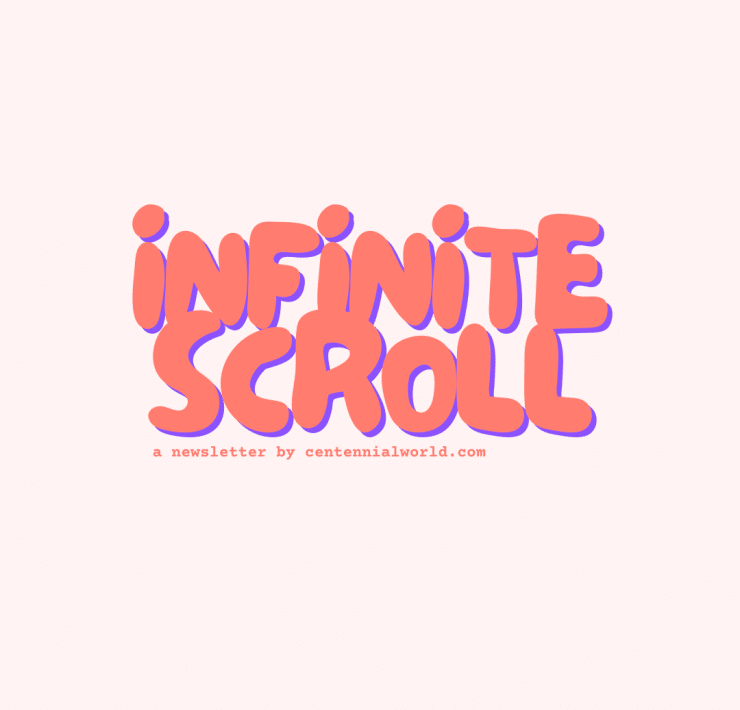
While most millennials would probably do anything to forget a time when we thought low rise pants, visible thongs, and diamante-encrusted everything was cool, for Gen Z, early 2000s fashion is nostalgic and vintage. Just like Millennials romanticised 90’s fashion and pop culture, as Gen Z (people born around the turn of the millennium to the early 2010s) enter their late teens and early 20’s, they are fascinated by early 2000s or ‘aughties’ fashion, also known as the Y2K aesthetic.
Characterised by bootcut jeans, hip-hugging waistbands, rhinestones, animal prints, baby tees, and denim-on-denim, and popularized by the thin, white celebrities of the time including Paris Hilton, Britney Spears, and Avril Lavigne, Y2K fashion was loud and iconic.
But the early 2000s were also marked by the highest recorded incidences of eating disorders – and the fashion aesthetic of the time was intrinsically linked to fatphobia, diet culture, and the promotion of highly unrealistic body standards. Between 1999-2000 and 2008-2009, eating disorder-related hospitalisations in the U.S. went up 24 percent, according to a survey.
Fashion trends tend to re-emerge in cycles of around 20 years, and Y2K fashion is seeing a strong revival— helped along by sustainable fashion practices and thrifting— creating a market for preloved clothes in older styles. But at what cost?
This era of fashion was marketed in such a fun way as to say you’ll never be as happy or free of fun unless you’re thin
— beauty bruja astrology tarotista🪞 (@bexbeautybruja) March 31, 2021
Y2K Fashion was Fatphobic and Harmful
Y2K fashion was designed with very thin, white women in mind. A flat, “washboard” stomach, thigh gap, and straight blonde hair were all integral to the Y2K aesthetic— a style that treated a very specific body type as an accessory in and of itself.
This trend also stemmed from the fact that a lot of the models entering the fashion industry in the 2010s were aged between 13 to 16, and had bodies that would be unattainable for adult women.
Not only were Y2K fashion staples designed to emphasise flat stomachs and skinny hips and arms, but they were also often unavailable in larger sizes, effectively shutting out anybody who did not conform to the ‘heroin chic’ body aesthetic.
As someone on TikTok pointed out, “The most famous accessory of the 2000s was skinny.”
YouTuber Angela Benedict explained how clothing in the 2000s was “built in a way that made your body look distorted”. These ridiculously designed clothing items left fat people with two equally unappealing options: partake in the trends of the time and be ridiculed for showing their bodies, or wear baggy, unfashionable clothing.
This was a time when celebrities like Hilary Duff, America Ferrera, and Drew Barrymore were considered ‘chubby’.
“Anybody above a size 2 seemed to be demonized, fat people were blatantly ignored and clothing options for plus-sized people in the early 2000s were virtually nonexistent, thereby completely excluding fat people from fashion,” says TikToker and model Jessica Blair.
@luvjessicablair lemme know if u want a part two <3 #early2000s #fashion #tiktokfashionmonth #plussize #fatphobia
♬ Kawaii – Yusei
This is not to say that Y2K fashion was fatphobic because the outfits were skimpy, or that all revealing fashion styles are fatphobic. Fat bodies can look great in miniskirts, baby tees and the like, and deserve to be shown off.
But these styles were simply not built to show off fat bodies in a way that accentuated them. Rather, they were designed to hyperfocus on perceived imperfections and allow the wearer “no room to hide”.
@luvjessicablair very tired of the fatphobic idea that only thin people can/should be proud of their bodies and want to show them off. stop telling people what to wear
♬ original sound – carlos ♚
The Erasure of POC Contributions to Y2K Fashion
Fatphobia has deep roots in racism and colonialism.
Sabrina Strings in Fearing the Black Body: The Racial Origins of Fat Phobia, explains how fatness became associated with Blackness and started to be seen as undesirable in the 17th century. Black people were seen as ‘sensous’ people who loved sex and food, which was associated with fatness. In a bid to distance themselves from these traits, white people began to prize slenderness.
Over the decades, this mindset evolved into ‘diet culture’ and an obsession with thinness that led people to internalize the belief that being fat is unhealthy. But Y2K fashion’s emphasis on thinness isn’t the only way it was racist. It also erased the creative contributions of the Black community, attributing styles popularised by people of colour to the white celebrities of the time.
Some of the most popular Y2K styles, including velour tracksuits, bedazzled logos, bucket hats, and Nike Air Force 1 sneakers were pioneered by artists of colour like Lil Kim, Missy Elliot, Nelly, Notorious B.I.G., and the members of Destiny’s Child and Salt-n-Pepa, but quickly grew to become associated with the white celebrities of the time, like Paris Hilton, Britney Spears, and Kim Kardashian.
Moreover, a lot of these fashion trends were only seen as cool and trendy when sported by thin (and mostly white) bodies, despite being popularized by Black people.
Black people dominated pop culture back in the early 2000s yet the y2k aesthetic is extremely whitewashed. So here’s what actual y2k aesthetic looks like 💕 pic.twitter.com/om4RuMivW9
— ✨Mel✨ (@grungeugly) September 7, 2020
While there is no denying that Y2K fashion is back in style, one can only hope that it evolves to be more inclusive and accessible than the last time around.
Fashion vloggers and TikTokers like @denisemmercedes, @dexrated, @trendycurvy, and @luvjessicablair are helping popularize more inclusive and body-positive variants of Y2K styles.


